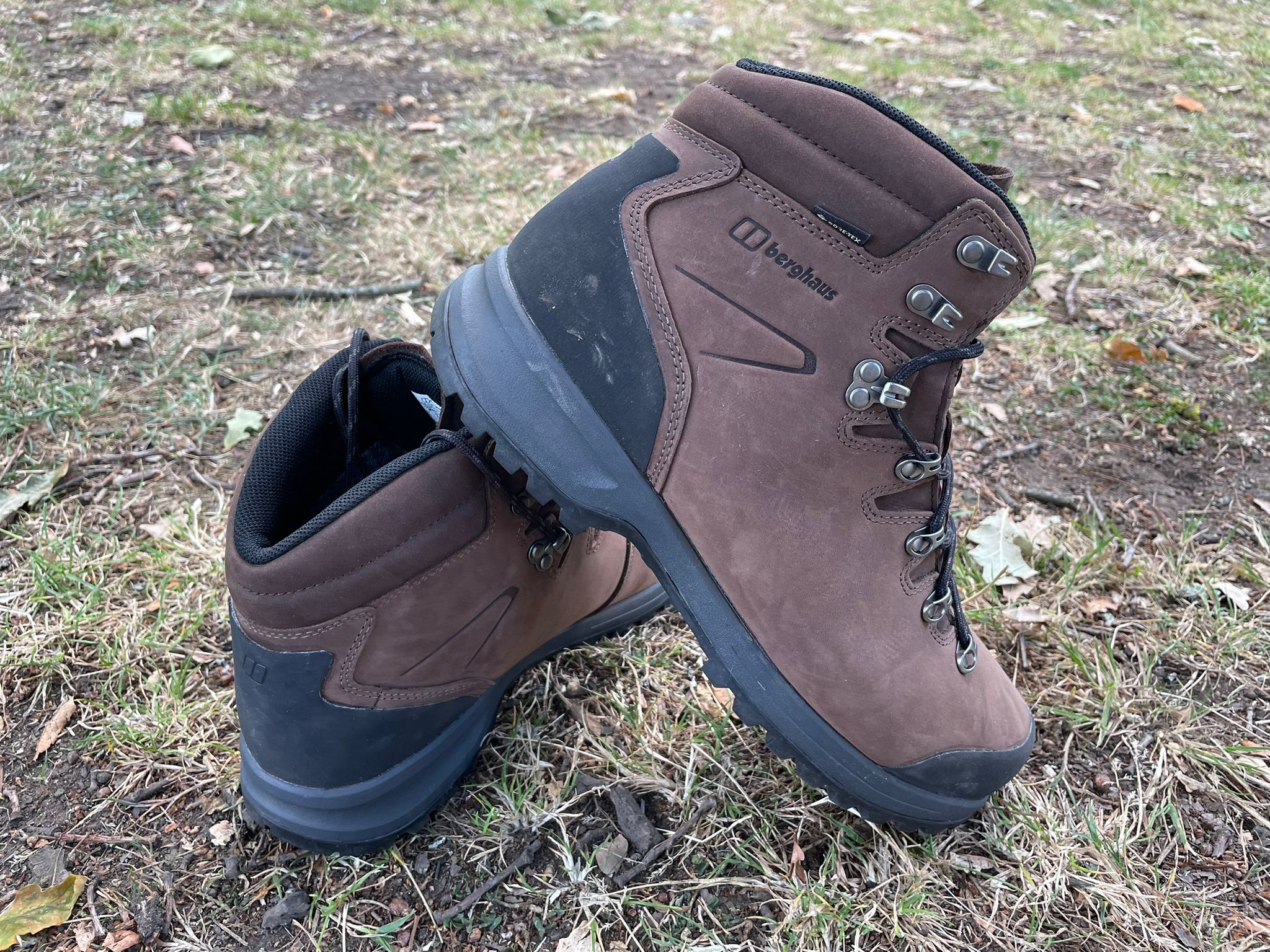
Stay up to date with notifications from The Independent
Notifications can be managed in browser preferences.
The Independent's journalism is supported by our readers. When you purchase through links on our site, we may earn commission. Why trust us?
The best men’s walking boots 2025, tried and tested by an expert
I tested some of the best boots on the market, wearing them on Welsh peaks to the South West Coast Path – these are the ones that really walked the walk
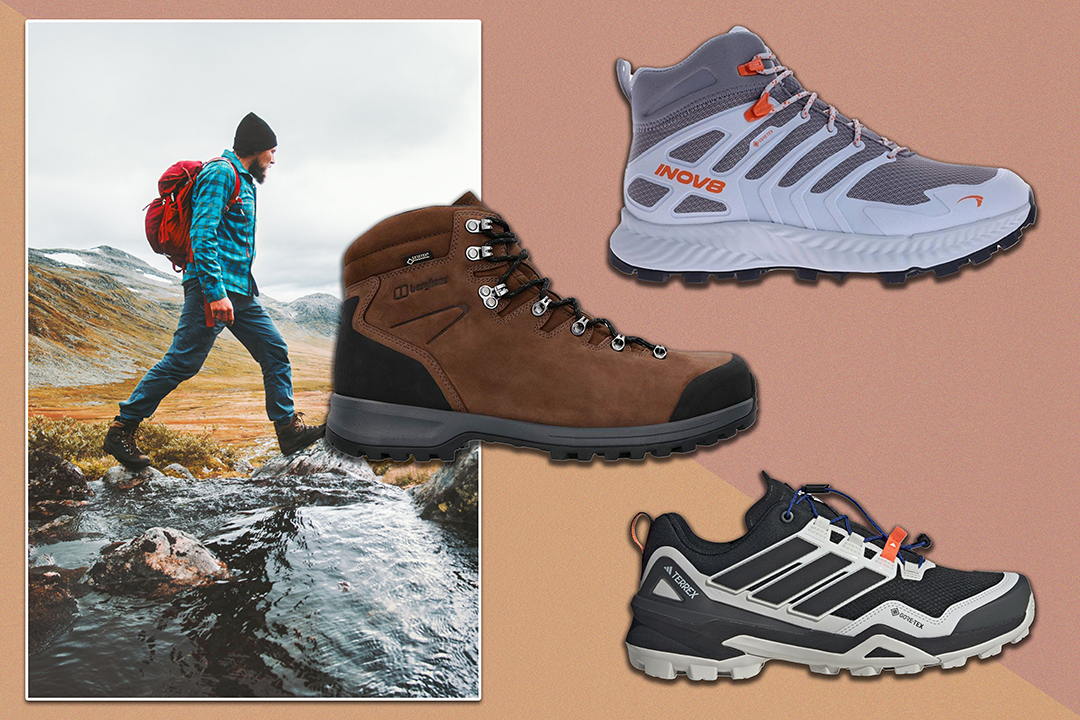
If you’re looking to rack up the miles on foot, it pays to prepare from the ground up, so investing in a pair of quality walking boots should be priority number one.
Market-leaders will keep your feet dry, supported and – most importantly – comfortable no matter what terrain you tackle, while a sub-par pair can be a one-way ticket to blisters. So it pays to find the right shoe for you.
To help you do this, I’ve put some of the best walking shoes on the market through their paces, hiking up some of the biggest hills Wales and the south of England had to offer.
Below you can find a list of my favourites, with a detailed breakdown of what makes them a worthy contender for your next walking boot. What you won’t see is any products that fell short of my stringent testing standards.
How I tested the best walking boots
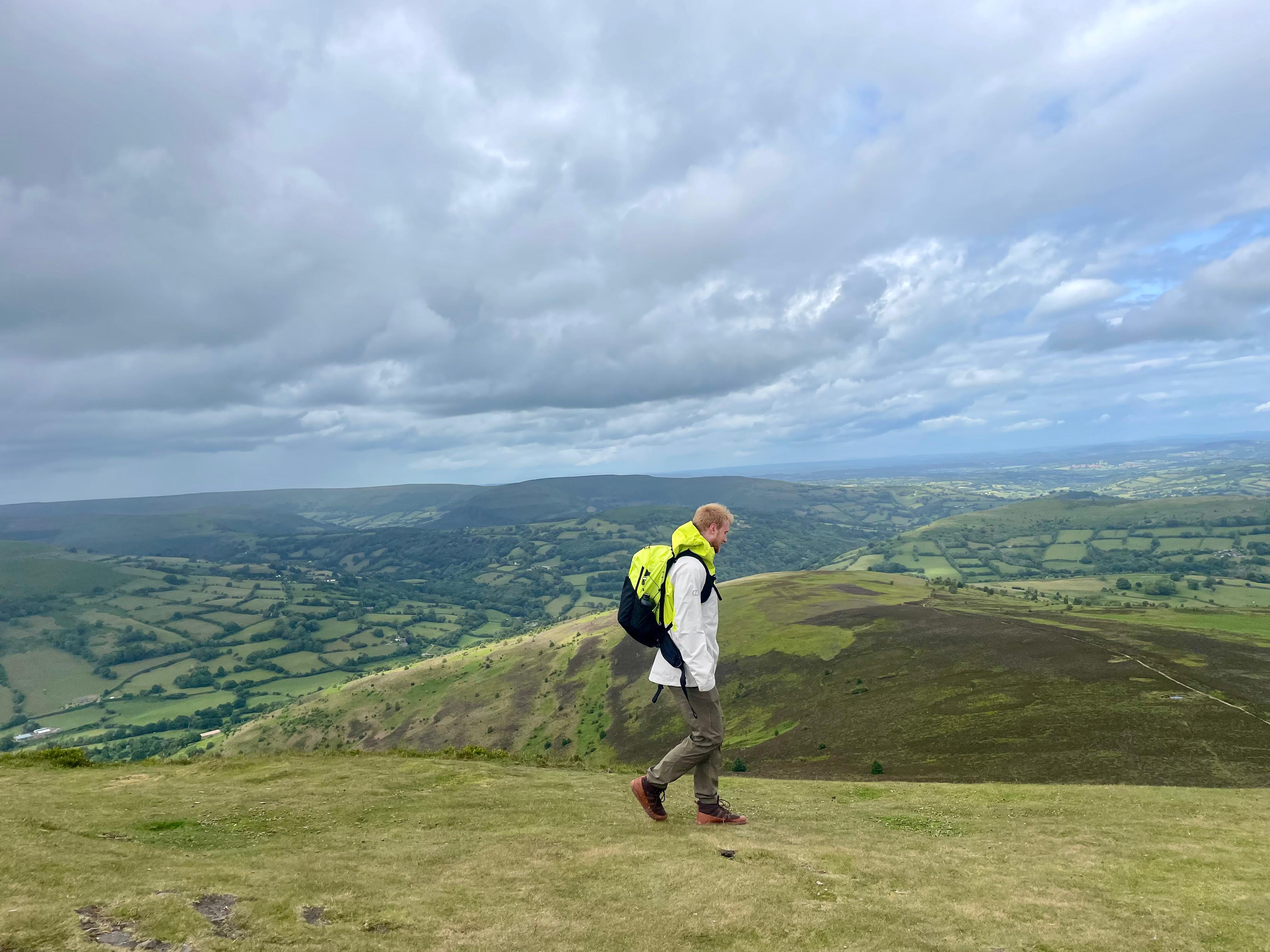
The best test for a pair of walking boots is a fairly simple two-step procedure; wear the boots, walk in the boots. To ensure testing was comprehensive, I ditched my usual lunchtime lap of the park in favour of more challenging topography, taking weekend trips to Cornwall, Dartmoor, Eyri National Park (Snowdonia), the Brecon Beacons and the Peak District. Every pair of boots on this list has been worn for several hikes across the south of England and Wales.
In each pair, I looked for comfort above all else. Next on my bingo card was whether they could keep my feet feeling fresh during longer hikes, then bonus points were awarded for good grip on a range of surfaces, foolproof waterproofing and little-to-no signs of wear and tear.
Why you can trust IndyBest reviews
As The Independent’s senior fitness writer and resident walking expert, a love of movement in all its forms comes with the job. For that reason, whether I was testing walking boots or not, I would still be heading up hills most weekends with my dog. This places me in a favourable position to recommend the best walking boots for two reasons. Firstly, I’ve had plenty of opportunities to try various walking boots over the years, so I know what makes a good pair. And secondly, my usual schedule provides plenty of opportunities to test more walking boots in some fairly challenging conditions – think deepest, darkest Devon, in torrential rain, several miles from an AirBnB.
The best men’s walking boots and shoes for 2025 are:
- Best overall – Berghaus fellmaster ridge GTX: £180, Berghaus.com
- Best for grip – Inov-8 roclite G 345 GTX men’s walking boots: £155, Inov-8.com
- Best value for money – Hi-Tec fuse trail hiking boot: £33.99, Hi-tec.co.uk
- Best walking shoe – Adidas terrex skychaser Gore-Tex hiking shoes: £84, Adidas.co.uk
- Best for comfort – Merrell moab speed 2 mid GTX: £160, Merrell.com
1Berghaus fellmaster ridge GTX brown

- Best: Overall
- Sizes: 7-12
- Weight per shoe: 703g
- Waterproof: Yes
- Colourways: Brown, dark grey
- Why we love it
- Robust build
- Comfortable for long hikes
- Repair service available
- Take note
- Expensive
- Heavier than rivals
This classic walking boot comes in two colour options: brown and dark grey. That should tell you a lot of what you need to know. This style foregoes bright designs and fancy features in favour of an old-school aesthetic, robust build and solid all-round performance.
That’s not to say it doesn’t have everything you need. The boot boasts out-the-box comfort, a Gore-Tex membrane for flawless waterproofing and a thick, grippy vibram outsole that is ready for any terrain. It just doesn’t have any unnecessary extras, which I liked.
The nubuck rubber upper and reinforced rubber toes mean it is double the weight of rivals from Inov-8 and Columbia, so it might be one to swerve for shorter, faster hikes. But I found I could wear it all day and emerge with comfortable, fatigue-free feet, which is why this is now my go-to for longer, more challenging adventures.
2Inov-8 roclite mid GTX
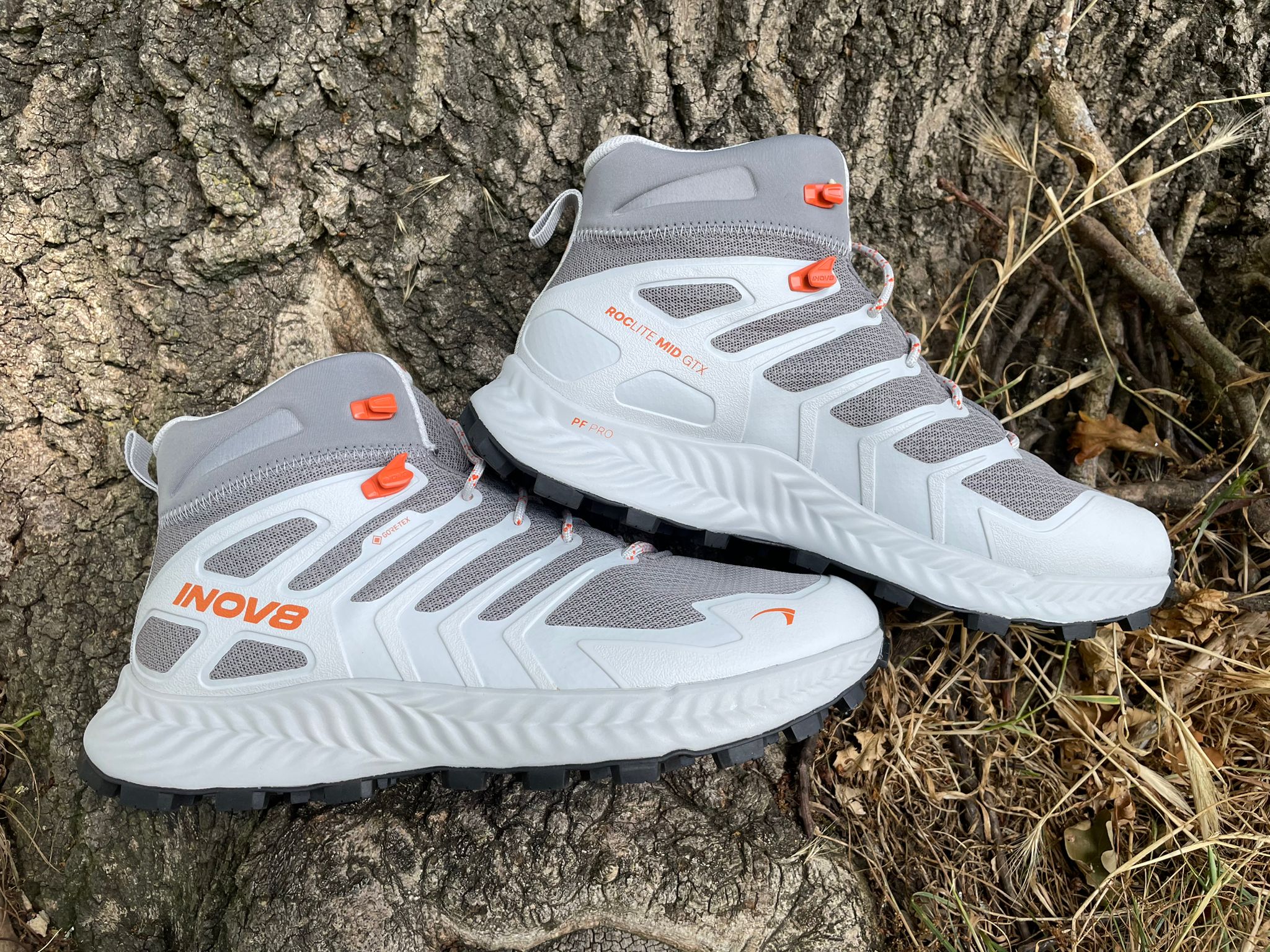
- Best: For grip
- Sizes: UK 6–13
- Weight per shoe: 425g
- Waterproof: Yes
- Colourways: Navy/black, black/dark grey, grey/orange
- Why we love it
- Lightweight and breathable
- Supportive
- Take note
- Expensive
Given Inov-8 is a Lake District-based brand so you’d wager the team knows its way around a steep hill or two. This shoe is living proof.
Featuring an updated anatomical fit that narrows at the heel for a locked in fit, then widens at the forefoot to allow your toes some welcome wiggle room, the boot was brilliantly comfortable from the off. Crucially, it remained this way for the remainder of my weekend walking holiday, leaving my feet feeling fresh and blissfully free of blisters.
It weighs just 425g and has a spongy, responsive midsole, feeling more like a running shoe than a classic walking boot at times. But the roclite still serves up the support, waterproofing and grip needed for a day of hard hiking, courtesy of effective hoof-shaped lugs.
A Gore-Tex waterproof membrane keeps puddles at bay, and only for the hardest of hikes would I be tempted to sub them out for a slightly more supported and protective high-top boot like the Berghaus option below.
My only note: they fit slightly on the smaller side, length-wise, so if in doubt it could be worth ordering half a size up.
3Hi-Tec fuse trail hiking boot
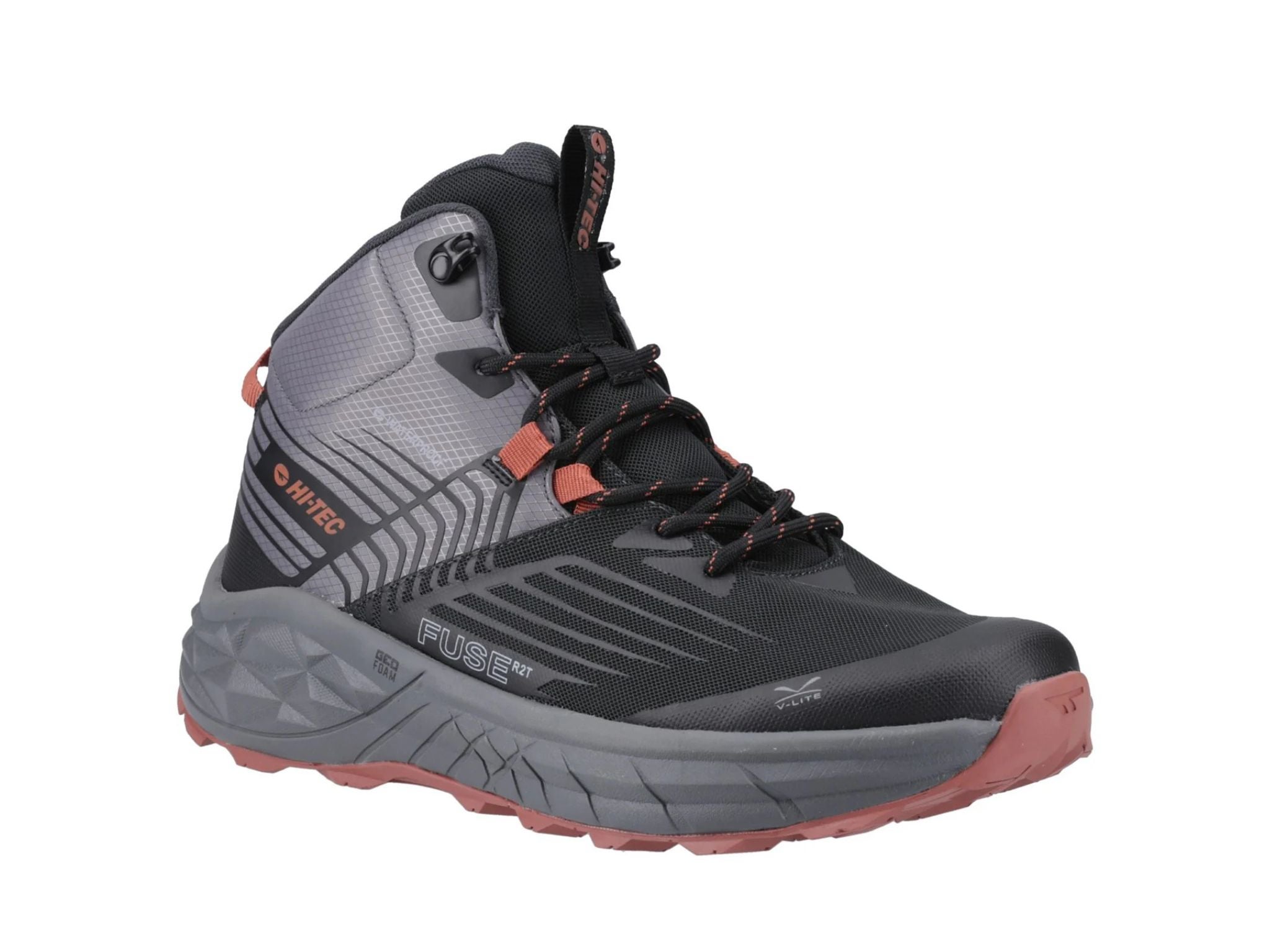
- Best: Value for money
- Sizes: 7–12
- Weight per shoe: Unspecified
- Waterproof: Yes
- Colourways: Grey
- Why we love it
- Great waterproofing
- Durability
- Take note
- Only one colour
These mid-reach boots boast a very chunky silhouette and beefy outsole, which I really appreciated, especially when I was trudging across cold, hard frosty moorland paths. However, for a big, rugged boot, they were lightweight and it’s easy to forget you’re wearing them after a few metres of setting off.
I didn’t need to worry about waterproofing, which was excellent and, even with big, thick winter hiking socks on, breathability throughout the shoe was good.
The toe box was roomy enough to make the shoe comfortable, but not so roomy you need to double-layer socks, and the heel fits nice and snugly, helping to avoid blisters. On the outside, there’s plenty of protection from the upper, and that big bumper that surrounds the base of the shoe means you can stride out without worrying about ground-level collisions.
4Adidas terrex skychaser Gore-Tex hiking shoes
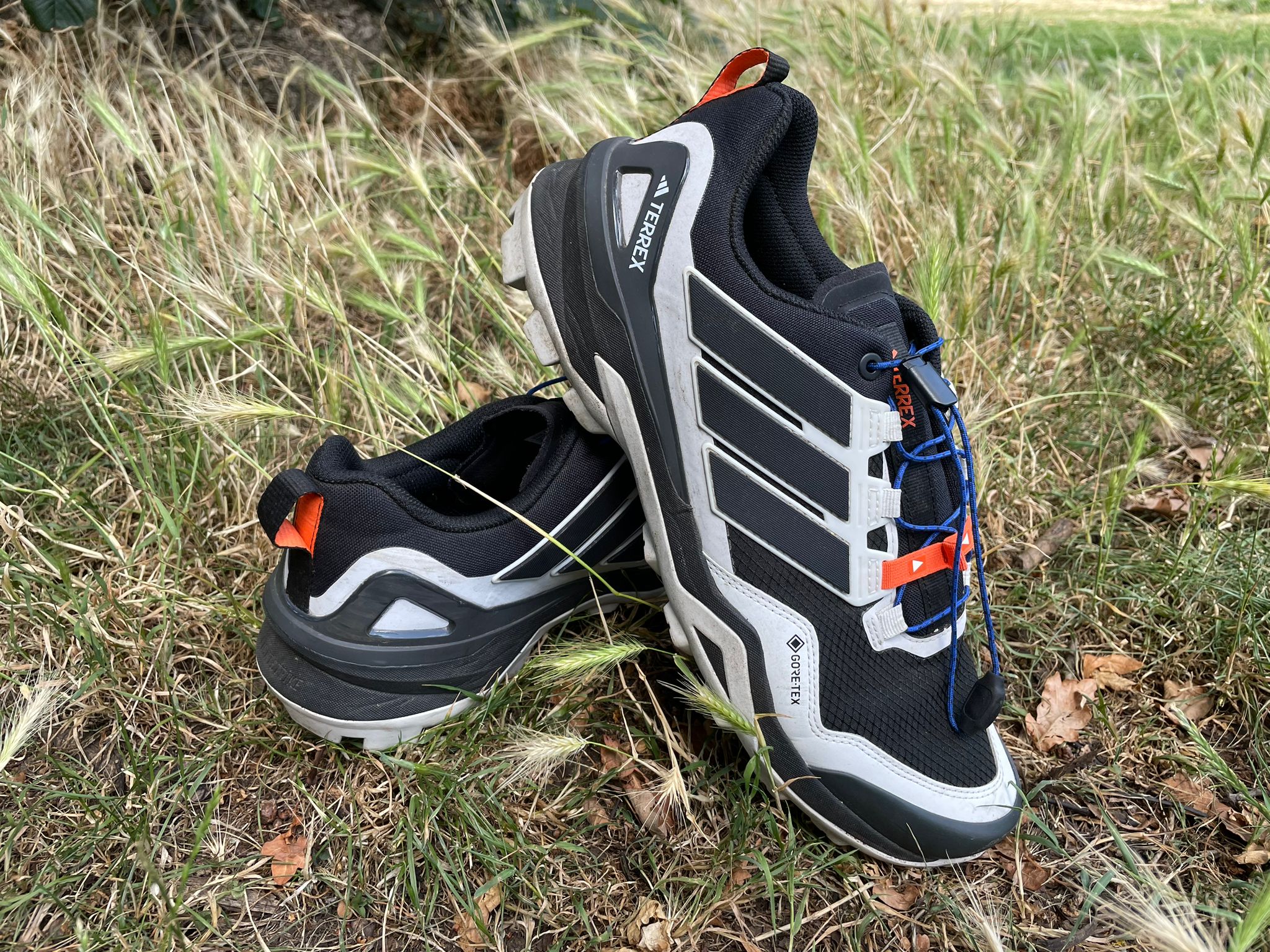
- Best: Walking shoe
- Sizes: 5.5–14.5
- Weight per shoe: 438g
- Waterproof: Yes
- Colourways: Black, green/beige, grey, red/orange/blue, black/grey
- Why we love it
- Quick to put on
- Durable
- Versatile
- Take note
- Expensive
- Slightly clunky
It’s a familiar scene: you fancy a quick jaunt, only to take longer lacing up your boots than you do actually walking. That’s not a problem with the Adidas terrex skychaser – and that’s why I love this pair so much.
The shoe (also available in a mid boot) has “speedlaces” – a bungee that takes seconds to fasten and loosen – which allowed me to slip in and ensure a secure fit in seconds. This was also a popular feature with my impatient dog.
Once on, the shoe felt like an all-terrain tank, ploughing through puddles and muddy paths with ease. Adidas promises to combine “the responsive feel of trail running shoes with the support and durability of hiking shoes”, and while I felt the skychaser was a tad too clunky to live up to the former, it certainly delivered the latter.
More surprising yet, they even received a few compliments from sartorially-minded people in my life, which is a rarity for me and my wardrobe.
I found the speedlaces felt marginally less secure than the eyelets of a classic walking boot, but for the tie they saved me on shorter walks I believe this was a worthy trade to make.
5Merrell moab speed 2 mid GTX
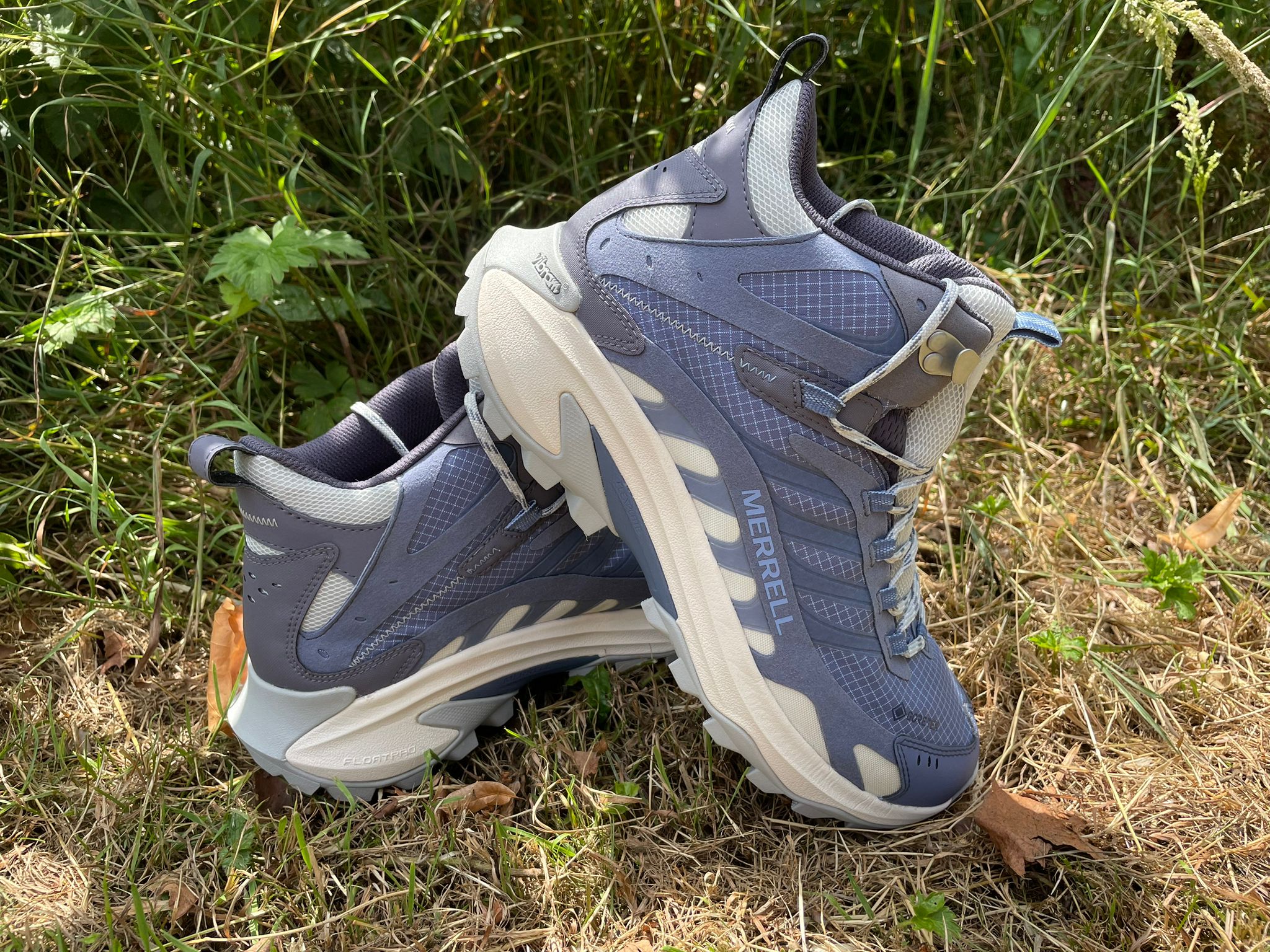
- Best: For comfort
- Sizes: 6.5-14
- Weight per shoe: 400g
- Waterproof: Yes
- Colourways: Indigo, calcite, slate, stucco
- Why we love it
- Out-of-the-box comfort
- Versatile
- Good balance of stability and support
- Take note
- Not the best to look at
- Expensive
If you want a pair of walking boots to score maximum style points, I wouldn’t buy them from Merrell – this is subjective, of course. However, if you want a pair of walking boots for function, the brand’s website is one of the first places I would look.
My first wear of the moab speed 2 mid GTX made it feel like I had owned the shoe for years, with the upper accepting my foot like an old friend. The padded collar and tongue give a plush trainer-esque fit, while the foam midsole offered a responsive ride which I really appreciated on longer hikes.
But despite being lightweight and springy, it still has all the support features you would want from a walking boot. The FlexPlate in the outsole provides a good balance of flexibility and rigidity, allowing me to tackle both easy dog walks and more technical routes in comfort.
Beyond this, the Gore-Tex waterproofing works a treat, the boot fits true to size and the heel locks in place securely to prevent any rubbing. In short: there’s very little not to like.
6Xero scrambler trail mid WP

- Best: Barefoot walking shoe
- Sizes: 5.5–14
- Weight per shoe: 395g
- Waterproof: Yes
- Colourways: Black/asphat, java brown/mocha bisque, morel/pure cashmere
- Why we love it
- Natural fit and feel
- Lightweight
- No break-in period
- Take note
- Slight wrinkling above the toe
I’ve worn barefoot shoes before for the gym and casual walks, but I always thought I needed something more sturdy under my feet for longer hikes. Yet to my surprise, when I wore the scrambler trail mid to climb Sugar Loaf in the Brecon Beacons, I fell in love.
My favourite part was being able to feel the trail beneath my feet. The outsole offered enough protection from jagged rocks to prevent any pain, but still allowed my feet to move naturally throughout the walk. This helped with grip and balance.
The shoe doesn’t feel as hardy as classic boots like the Danner and Berghaus entries below, but I’ve covered a fair few miles in my pair and I’ve had no problems with durability to date. The upper is lightweight and breathable, and the waterproof XeroTex membrane around the base of the upper proved puddle-proof when the heavens opened above Abergavenny.
Tightening the shoe to suit my fairly narrow feet, there was some slight wrinkling of the upper material at the base of the laces, but this was my only gripe.
7Columbia konos TRS outdry mid hiking shoe
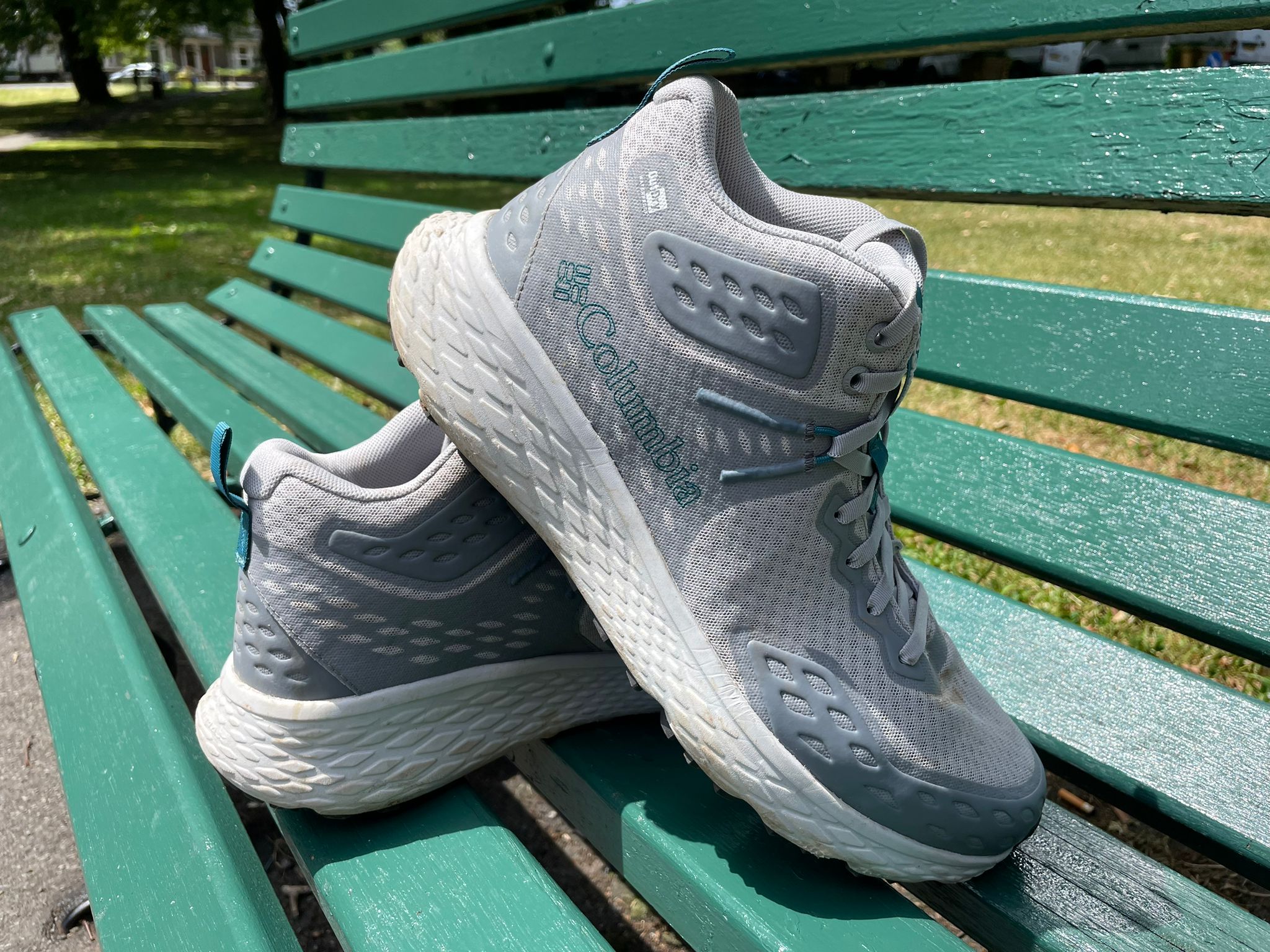
- Best: For fast hikes
- Sizes: 6-14
- Weight per shoe: 337g
- Waterproof: Yes
- Colourways: Steam/river blue, black/shark
- Why we love it
- Lightweight and breathable
- Lively, responsive ride
- Comfortable
If your average heavy leather walking boot is a dependable saloon, this is a sporty hatchback. Both will get you from A to B, but the journey is going to be faster (and more fun) in the konos TRS.
This is what I found when I wore a pair for a walking holiday in Devon. Thanks to the stack of springy midsole foam, I felt remarkably light on my feet while tackling a 10km stretch of the South West Coast Path, and the boot kept my feet dry even when I was caught by a lapping wave during a beachy interlude.
Better yet, the padded heel and tongue, twinned with its ergonomic shape, made this shoe one of the most comfortable options on test.
Add in the fact that it’s also among the most affordable and you have an excellent option for fast-paced short to mid-length hikes.
8Zamberlan salathé trek GTX RR
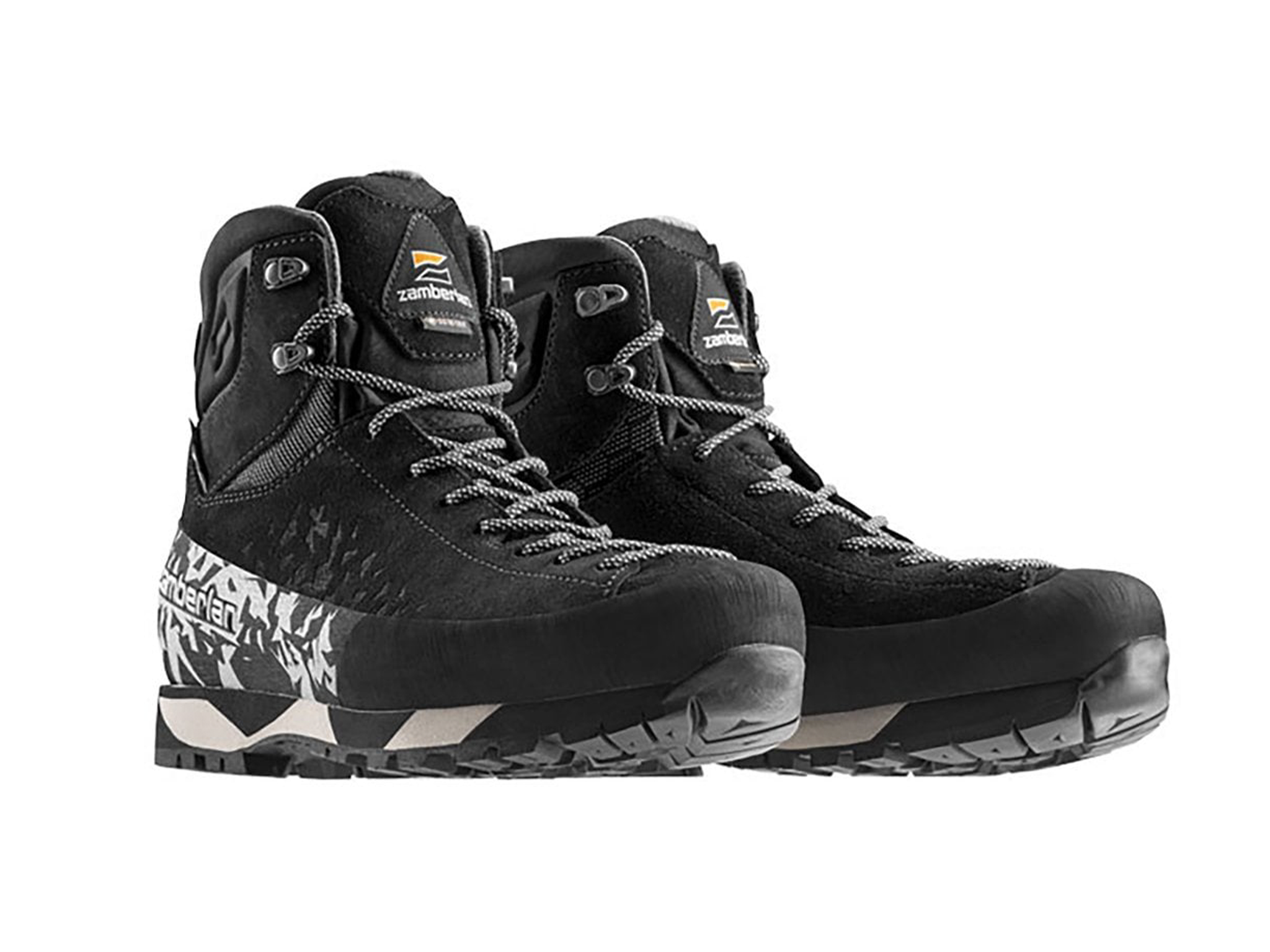
- Best: For versatility
- Sizes: 5-14
- Weight per shoe: 480g
- Waterproof: Yes
- Colourways: Black/yellow
- Why we love it
- Versatile
- Well-tailored and snug
- Take note
- Limited sizing available online
This is a truly versatile boot for ambitious walkers and hikers, capable of taking you from the lower approach routes all the way to the via ferrata, if you’re feeling ambitious. The combination of a Hydrobloc treatment on the suede upper and Gore-Tex lining means you can guarantee waterproofing, and for a big boot I was particularly impressed with how tailored and snug it was, thanks to a lacing pattern that reaches almost all the way down to the toe of the boot.
The Vibram Pepe sole system with Megagrip compound ensures greater grip on different types of terrain, and the dual density EVA wedge midsole guarantees cushioning and stability.
Despite being heavy on features, the shoe keeps the weight down and protection is guaranteed from the high cut upper that secured the ankle. Also, the fact the whole boot is surrounded with a rubber/PU band increases the durability and means this shoe will be with you for many seasons to come.
9Danner mountain 600 evo
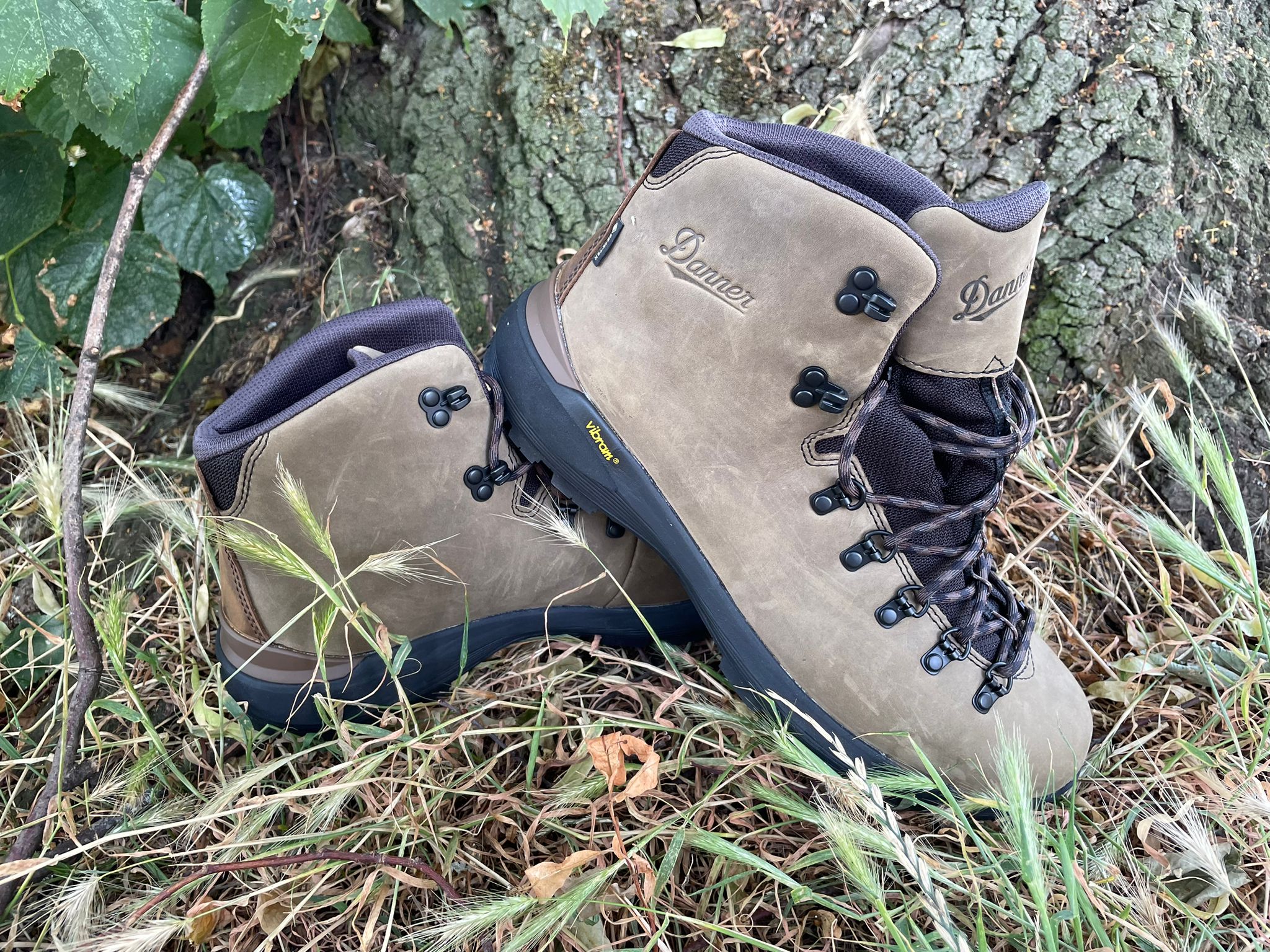
- Best: For hard hikes
- Sizes: 6–14
- Weight per shoe: 566g
- Waterproof: Yes
- Colourways: Mocha brown/rhodo red, topsoil brown/black
- Why we love it
- Nice style
- Robust
- Sturdy and supportive
- Take note
- Expensive
- Less responsive ride
Danner has always produced boots that look really good, without compromising performance on the trail, and it has excelled with this design. Its supremely comfortable full-grain leather upper looks great right out of the box, and feels even better the more broken-in the boots become.
The Gore-Tex waterproof barrier is supremely effective at keeping out water, while remaining breathable, and the boot isn’t all that weighty (566g per shoe) given its robust leather upper and no-nonsense vibram outsole.
It can’t compare to the running trainer-esque responsiveness of some of the other options on this list for featherweight credentials, but for hard hikes this sturdy boot offers a supportive feel which hardcore ramblers will love.
Whatever terrain you’re covering, this boot will keep your feet feeling fresh and protected. It’s undeniably expensive, but from the bombproof feel and lack of wear after a few weeks of use, I’d wager you won’t be having to replace it in a hurry.
10Salomon outpulse men’s walking boots
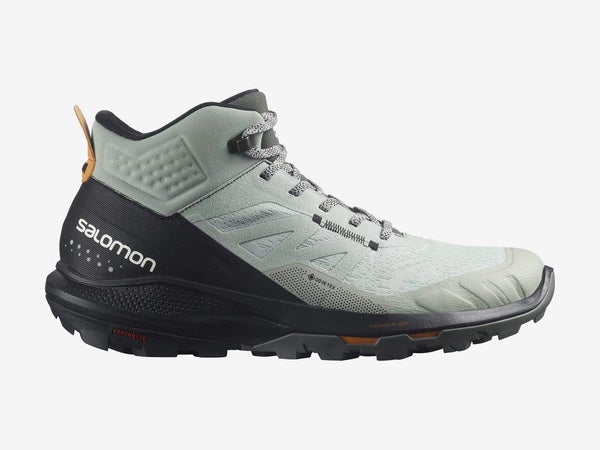
- Best: For out-of-the-box comfort
- Sizes: 6.5–13.5
- Weight per shoe: 380g
- Waterproof: Water repellent
- Colourways: Black, sand, navy, grey, blue,
- Why we love it
- Comfortable
- Grippy outsole
This boot made an excellent first impression – it looks great. As I laced it up, I was impressed with how incredibly comfortable it felt. The boot has an almost customised feel and quickly moulded to my foot, leaving no room for rubbing while still enabling me to move my toes for balance.
The foam compound used in the midsole worked to create a natural roll from heel to toe, which helped when my legs were getting tired. The outsole, meanwhile, was excellent at keeping me grounded and absorbing the blows from tougher terrain and rock.
Plus, the Gore-Tex lining did its job brilliantly in wetter sections, without leaving me with two steaming feet when the sun finally decided to make an appearance.
11Arc’teryx kopec mid GTX boot
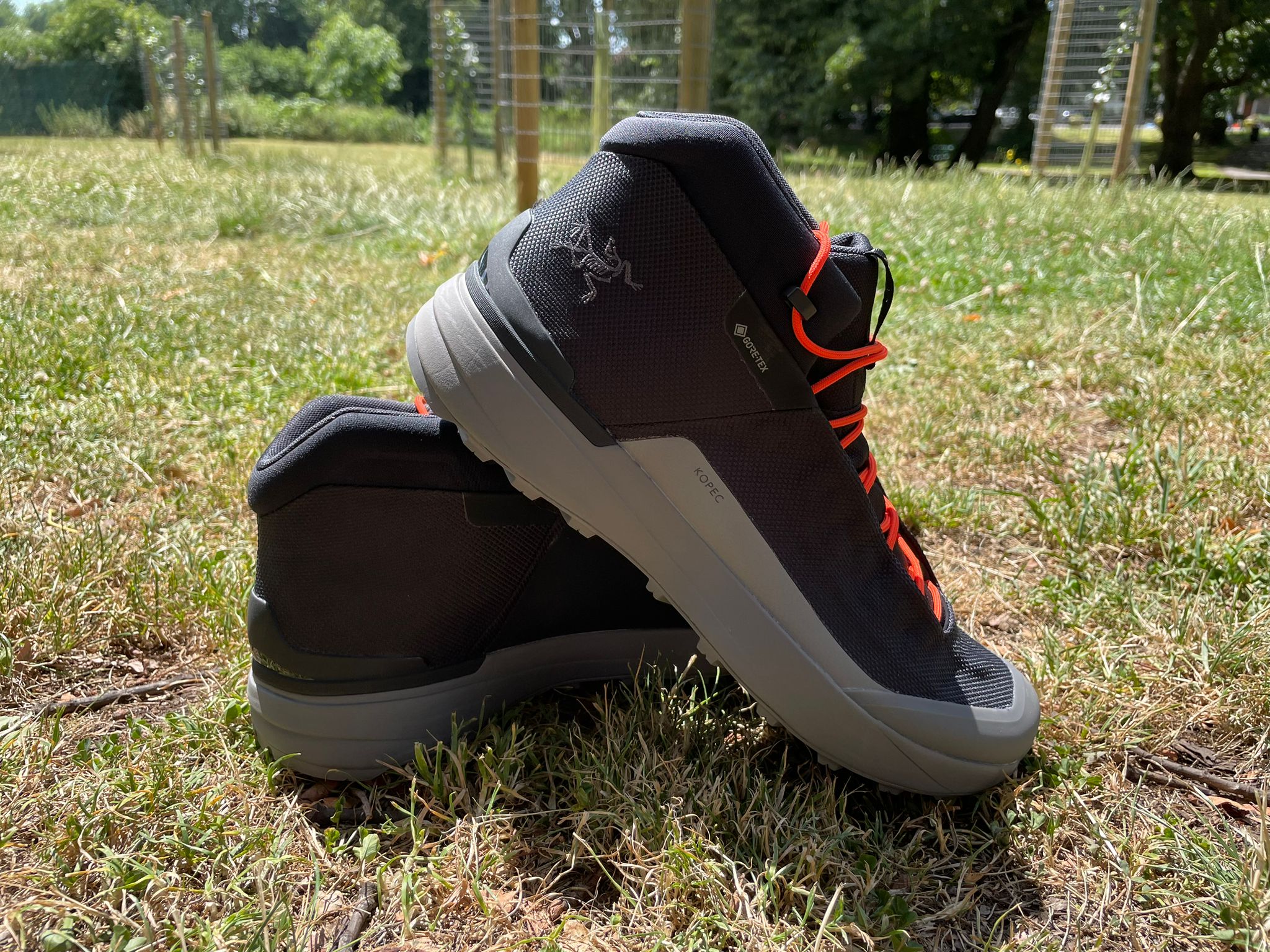
- Best: For narrow feet
- Sizes: 6.5–12
- Weight per shoe: 340g
- Waterproof: Yes
- Colourways: Canvas/rune, black, black/orange, rune/black, stratus
- Why we love it
- Stylish
- Lightweight
- Durable
- Take note
- Narrow fit
- Expensive
Most walking boots don’t look like they used to, and in many cases that’s no bad thing. With developments in materials, a weighty leather frame is no longer a prerequisite, and this Arc’Teryx boot is a prime example of this new age.
The Cordura upper is lightweight and incredibly durable, emerging unscathed from a wet and windy walk along part of the South West Coast Path. It also kept my feet largely dry, with the Gore-Tex layer and gusseted tongue fending off water from long, dewy grass.
The grip afforded to me by the lugs on the vibram outsole was never in doubt, whether I was covering hard trails, grassy verges or boggy “paths”. However, I did find the shoe has a narrow fit, and would have liked some more space around my forefoot, even after I had loosened the laces.
As with anything by Arc’Teryx, the price point is high, but if you’re after a set of stylish-yet-sturdy walking boots (and you have narrow feet) this is a very solid option.
12North Ridge flux speed low walking shoes
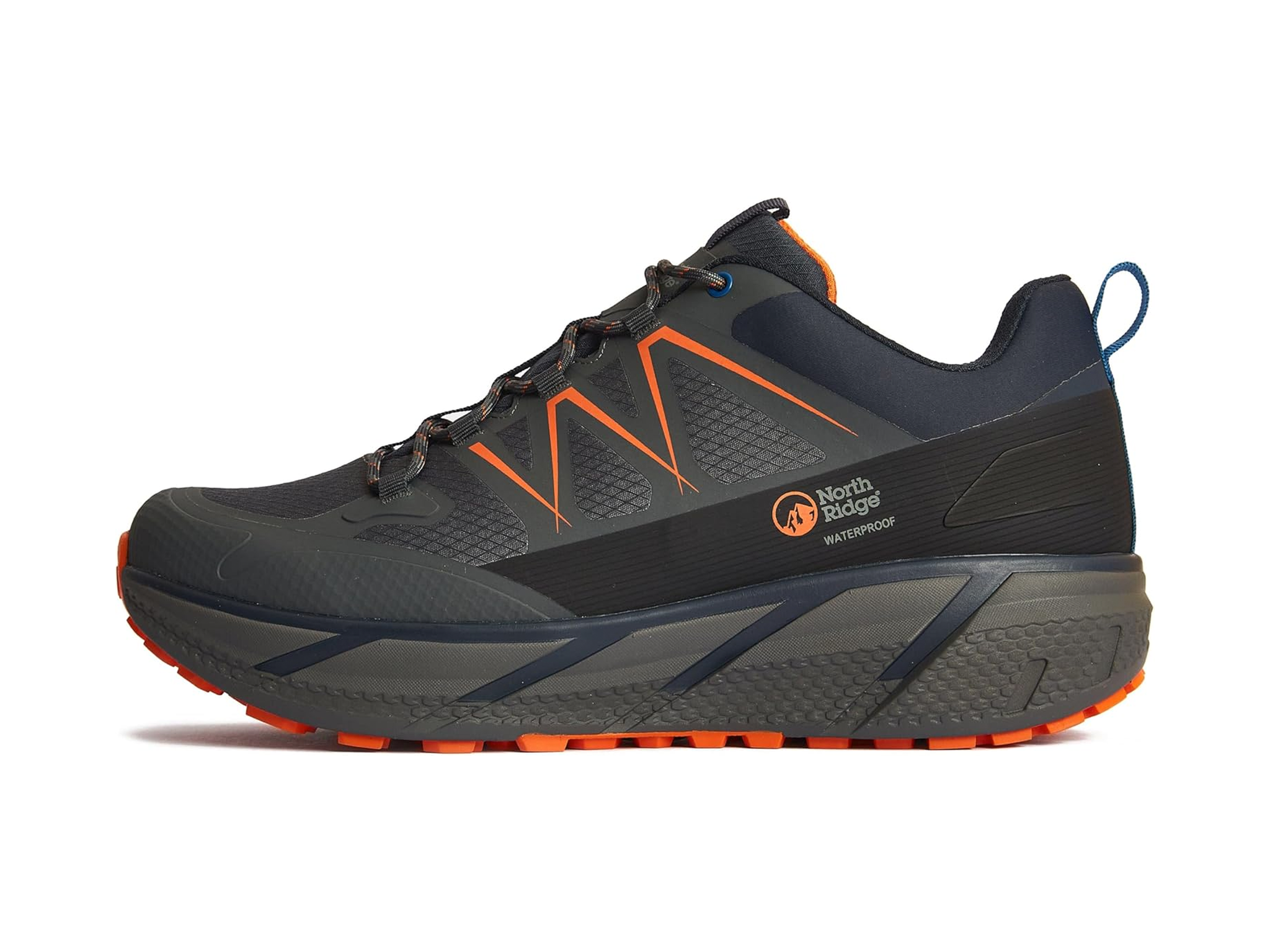
- Best: For speed
- Sizes: 7–12
- Weight per shoe: 340g
- Waterproof: Yes
- Colourways: Black
- Why we love it
- Great price
- Good waterproofing
- Comfortable
- Take note
- One colour available
These low-cut shoes are made for speed and comfort. They performed especially well on my wet walks thanks to their three layers of protection, including an effective membrane, seam sealing throughout the shoe and a water-repellent treatment on the upper.
The chunky silhouette and thick midsole provide plenty of protection, and held my foot higher to minimise stumbles and collisions with boulders and rocks.
The mesh ankle collar was comfortable and offered good protection, and there’s a complex lug pattern on the outsole. This provided efficient traction, while ensuring I didn’t end up with lots of mud stuck to the bottom of my boot.
Men’s walking boots FAQs
How snugly should walking boots fit?
When buying a new pair of walking boots, it’s important to make sure they fit you properly. If they’re too tight, you may encounter painful blisters, but if there’s too much room around your heel you’ll lose out on ankle support and cushioning. Instead, the perfect pair should fit as well as your most comfortable trainers – not too snug, nor too loose, with enough room to wiggle your toes without any unwanted foot movement while walking up or downhill.
Will I need to break in my walking boots?
Breaking in means wearing your new boots until they mould to your feet. Typically, the heavier and more solid the boot, the longer it will take for this to happen. To break in your new boots, wear them around the house to get used to walking in them. This will later ensure they don’t cause any discomfort when you’re on a trail, hike or trek. Lightweight boots will require less breaking in and are likely to be more flexible, thanks to softer, more supple materials.
How to clean and look after hiking boots so they last
If you’re walking across muddy, rocky and rough terrains in all weather conditions, you will encounter a build-up of dirt on your boots. Look after them in between your hikes by lightly scrubbing them with a soft nylon brush to get rid of any dry mud. You can also scrub them with a gel or spray to remove debris and then wipe off any residue with a damp cloth.
Avoid using any products to soften the upper, as this will cause the boot to lose its shape and become less supportive. You shouldn’t soak them in warm water during washing either, or use leather-softening products. To help your boots maintain their shape after cleaning, try stuffing them with newspaper, which will also soak up any excess moisture.
The verdict: men's walking boots
If you want a brilliant walking boot that won’t let you down, I prescribe the Berghaus fellmaster ridge GTX. Yes, it’s expensive, but its hardy design mean you won’t be replacing it in a hurry. And if it does stutter, you can always send it too the brand’s Repairhaus team to patch it up. Though it’s on the heavier side, the waterproofing was faultless, it was comfortable and supportive for all day wear, and the thick vibram grip inspired confidence on all surfaces.
If you want something lighter and more nimble for faster hikes, the Inov-8 roclite mid GTX is an excellent waterproof alternative which tips the scales at less than 430g. It’s comfortable, breathable and energetic underfoot to boot. The Hi-Tec fuse trail hiking boot offers many of the perks of premium shoes at a far more palatable price, while the speed laces of the Adidas terrex skychaser GTX make it a brilliant dog-walking option, particularly if you can find a decent discount.
Pair your new boots with the best men’s waterproof trousers to tackle the toughest hikes in comfort.



